What Role Does the Waveguide Short Plate Play in Ensuring Superior Signal Transmission?
In the intricate world of microwave technology, where precision meets performance, the Waveguide Short Plate stands as a fundamental component that ensures optimal signal transmission across various high-frequency applications. This critical microwave component serves as the backbone of waveguide systems, functioning to terminate, block, or redirect signals with exceptional efficiency. From satellite communications spanning vast distances to defense radar systems requiring pinpoint accuracy, the Waveguide Short Plate's role cannot be overstated in maintaining signal integrity and system reliability. The Waveguide Short Plate serves as a high-reflection termination device that creates a near-perfect short circuit within waveguide systems, effectively preventing signal leakage and maintaining optimal power transfer efficiency. Operating across frequency ranges from 1.72 GHz to 110 GHz in 18 different waveguide bands, these precision-engineered components deliver superior VSWR performance of 60:1 minimum, ensuring maximum signal reflection and minimal insertion loss. Available in multiple waveguide sizes from WR-10 to WR-430 with UG square/round cover and CPR-style flanges, the Waveguide Short Plate provides versatile integration capabilities for diverse microwave applications across telecommunications, aerospace, defense, and satellite communication industries.
Critical Functions of Waveguide Short Plates in Signal Management
Signal Termination and Reflection Control
The primary function of a Waveguide Short Plate lies in its ability to provide precise signal termination within microwave systems. When electromagnetic waves travel through a waveguide structure, they require proper termination to prevent unwanted reflections that could compromise system performance. The Waveguide Short Plate achieves this by creating a metallic barrier that reflects the incoming signal back toward the source with minimal loss. This reflection characteristic is particularly crucial in applications where signal integrity must be maintained across long transmission paths, such as in satellite ground stations where signals must travel thousands of miles without degradation. The precision engineering of these plates ensures that the reflection coefficient remains consistently high across the entire operating frequency range, typically achieving VSWR ratios of 60:1 or better. Advanced Microwave Technologies Co., Ltd. manufactures these components using high-grade materials such as brass and stainless steel, ensuring durability and consistent performance even under extreme environmental conditions. The Waveguide Short Plate also serves as a calibration standard in measurement systems, providing a known reference point for network analyzers and other test equipment used in microwave laboratories worldwide.
Impedance Matching and Power Transfer Optimization
Impedance matching represents another critical aspect where the Waveguide Short Plate demonstrates its essential role in microwave systems. When signals encounter impedance mismatches within a transmission line, significant power loss occurs due to reflections at the discontinuity points. The Waveguide Short Plate helps address this challenge by providing a controlled impedance environment that optimizes power transfer efficiency throughout the system. In complex antenna feeding networks, multiple Waveguide Short Plate components work together to create specific impedance transformations that ensure maximum power delivery to radiating elements. This capability becomes particularly important in phased array radar systems where precise phase and amplitude control across multiple elements determines the overall system performance. The high-frequency capabilities of modern Waveguide Short Plate designs, extending up to 110 GHz, make them suitable for next-generation communication systems including 5G and emerging 6G technologies. Advanced manufacturing techniques employed by industry leaders ensure that these components maintain their impedance characteristics across wide temperature ranges, making them suitable for aerospace applications where thermal cycling is a constant challenge. The Waveguide Short Plate also plays a crucial role in filter design, where it serves as a reactive element that helps shape the frequency response of bandpass and bandstop filters used in communication systems.
System Protection and Isolation
Beyond signal management, the Waveguide Short Plate provides essential protection functions within microwave systems by isolating different sections and preventing unwanted signal coupling. In high-power applications such as radar transmitters, the Waveguide Short Plate serves as a safety mechanism that prevents dangerous RF energy from propagating into sensitive measurement equipment or personnel areas. This protection function becomes critical in military and aerospace applications where system reliability directly impacts mission success and personnel safety. The robust construction of these components, featuring materials capable of handling high power levels without degradation, ensures long-term reliability in demanding operational environments. Modern Waveguide Short Plate designs incorporate advanced thermal management features that dissipate heat effectively, preventing temperature-related performance degradation that could compromise system operation. The isolation characteristics of these components also make them valuable in test and measurement applications where cross-talk between different measurement paths must be minimized. Advanced Microwave Technologies Co., Ltd. has developed specialized Waveguide Short Plate variants that offer enhanced isolation performance for sensitive measurement applications, incorporating precision machining techniques that achieve surface finishes critical for millimeter-wave operation. The environmental compliance of these components, meeting RoHS standards, ensures that they can be safely deployed in commercial and military applications without environmental concerns.
Engineering Excellence in Waveguide Short Plate Design
Precision Manufacturing and Quality Control
The manufacturing process of Waveguide Short Plate components demands exceptional precision to achieve the performance specifications required for modern microwave applications. Advanced computer-controlled machining centers ensure that dimensional tolerances remain within micrometers, critical for maintaining consistent electrical performance across the entire frequency range. The Waveguide Short Plate manufacturing process begins with careful material selection, where high-conductivity metals such as copper, brass, and stainless steel are chosen based on the specific application requirements. Surface finish quality plays a crucial role in high-frequency performance, with modern Waveguide Short Plate components achieving surface roughness values that minimize insertion loss even at millimeter-wave frequencies. Quality control procedures include comprehensive dimensional inspection using coordinate measuring machines, ensuring that each Waveguide Short Plate meets the strict geometric requirements necessary for proper waveguide interface compatibility. Electrical testing validates the VSWR performance across the entire operating frequency range, with automated test systems capable of measuring performance up to 110 GHz. Advanced Microwave Technologies Co., Ltd. maintains ISO 9001:2015 certification, demonstrating commitment to quality management systems that ensure consistent product performance. The Waveguide Short Plate undergoes environmental testing to validate performance under extreme temperature conditions, vibration, and humidity exposure typical of aerospace and defense applications. Statistical process control techniques monitor manufacturing variations, enabling continuous improvement in product quality and reliability.
Material Science and Thermal Management
Material selection for Waveguide Short Plate applications involves careful consideration of electrical, thermal, and mechanical properties that affect long-term performance and reliability. The choice of base materials significantly impacts the component's ability to handle high-power applications without thermal degradation. Modern Waveguide Short Plate designs incorporate advanced alloys that provide excellent thermal conductivity while maintaining the mechanical strength necessary for repeated connection cycles. Thermal expansion coefficients must be carefully matched to the waveguide materials to prevent stress concentrations that could lead to mechanical failure over extended operating periods. Surface treatments such as gold plating or silver plating enhance conductivity and provide corrosion resistance, particularly important for Waveguide Short Plate components deployed in harsh environmental conditions. The thermal mass of the component affects its ability to absorb and dissipate heat generated by high-power RF signals, with larger components generally providing better thermal performance. Advanced finite element analysis techniques enable engineers to optimize the thermal design of Waveguide Short Plate components, predicting temperature distributions and identifying potential hot spots before manufacturing. Material testing includes thermal cycling evaluations that simulate the temperature variations encountered in real-world applications, ensuring that the Waveguide Short Plate maintains its electrical performance throughout its operational life. Advanced Microwave Technologies Co., Ltd. employs sophisticated material characterization techniques to validate the properties of raw materials used in Waveguide Short Plate manufacturing, ensuring consistent quality and performance.
Advanced Testing and Calibration Procedures
Comprehensive testing protocols ensure that each Waveguide Short Plate meets the stringent performance requirements of modern microwave systems. Network analyzer measurements characterize the reflection coefficient across the entire frequency range, validating that the component achieves the specified VSWR performance. The Waveguide Short Plate serves as a calibration standard in many measurement applications, requiring exceptional accuracy and stability over time. Automated test systems enable rapid evaluation of multiple units, ensuring production efficiency while maintaining quality standards. High-power testing validates the component's ability to handle the power levels encountered in real-world applications without performance degradation or damage. Temperature coefficient measurements characterize how the Waveguide Short Plate performance varies with temperature, critical information for applications where thermal stability is essential. Time domain reflectometry techniques provide detailed information about the impedance characteristics of the component, enabling engineers to optimize designs for specific applications. Mechanical testing validates the durability of flange connections and the ability to withstand repeated mating cycles without degradation. Advanced Microwave Technologies Co., Ltd. maintains state-of-the-art measurement facilities capable of characterizing Waveguide Short Plate performance up to 110 GHz, ensuring that products meet the requirements of next-generation communication systems. Long-term stability testing monitors performance changes over extended periods, providing data on the expected operational lifetime of these critical components.
Applications and Industry Impact of Waveguide Short Plates
Satellite Communication Systems Integration
The satellite communication industry relies heavily on Waveguide Short Plate components to maintain signal integrity across complex ground station installations and satellite payload systems. These components play essential roles in antenna feeding networks where precise impedance control ensures maximum power transfer efficiency from high-power amplifiers to radiating elements. The Waveguide Short Plate serves as a critical component in waveguide switch matrices that route signals between different antenna elements or communication channels, providing the isolation necessary to prevent cross-talk between different signal paths. In satellite ground stations, these components must operate reliably across wide temperature ranges and withstand environmental stresses including wind loading, thermal cycling, and precipitation effects. The high-frequency capabilities of modern Waveguide Short Plate designs support the increasing bandwidth requirements of satellite communication systems, enabling higher data rates and improved spectral efficiency. Ku-band and Ka-band applications particularly benefit from the precision engineering of these components, where even small impedance mismatches can result in significant performance degradation. The Waveguide Short Plate also plays a crucial role in beacon tracking systems used for satellite pointing and acquisition, providing the precise impedance control necessary for accurate signal level measurements. Advanced Microwave Technologies Co., Ltd. has developed specialized variants optimized for satellite applications, incorporating features such as enhanced thermal stability and reduced passive intermodulation distortion. The reliability requirements for satellite applications demand components that can operate for decades without maintenance, making the quality and durability of Waveguide Short Plate components critical to mission success.
Defense and Aerospace Radar Applications
Military and aerospace radar systems represent some of the most demanding applications for Waveguide Short Plate components, where performance requirements often exceed those of commercial applications. These systems require components that can handle high peak and average power levels while maintaining precise electrical characteristics across wide frequency ranges. The Waveguide Short Plate serves critical functions in radar transmitter protection circuits, preventing damage to sensitive receiver components during high-power transmission periods. In phased array radar systems, multiple Waveguide Short Plate components work together to provide precise phase and amplitude control across hundreds or thousands of individual radiating elements. The component's ability to maintain consistent performance across extreme temperature ranges makes it suitable for airborne applications where thermal cycling is severe and unpredictable. Electronic warfare applications place additional demands on Waveguide Short Plate performance, requiring components that can operate across extremely wide frequency ranges while maintaining low loss and high isolation characteristics. The Waveguide Short Plate also plays important roles in radar calibration systems, providing known reflection standards that enable accurate system performance verification. Advanced materials and manufacturing techniques enable these components to withstand the mechanical stresses associated with high-acceleration environments typical of missile and spacecraft applications. Advanced Microwave Technologies Co., Ltd. works closely with defense contractors to develop customized Waveguide Short Plate solutions that meet specific military specifications and standards. The security requirements of defense applications also demand rigorous supply chain controls and quality assurance procedures that ensure component authenticity and reliability.
Telecommunications Infrastructure and 5G/6G Networks
The rapid evolution of telecommunications infrastructure, particularly the deployment of 5G and development of 6G networks, creates new requirements for Waveguide Short Plate components that can operate at millimeter-wave frequencies with exceptional performance. These components play essential roles in base station antenna systems where precise impedance matching ensures optimal power transfer efficiency from power amplifiers to radiating elements. The Waveguide Short Plate serves critical functions in beamforming networks that enable the directional beam control necessary for massive MIMO antenna systems. High-frequency applications above 24 GHz place stringent requirements on component precision, where even minor manufacturing variations can result in significant performance degradation. The Waveguide Short Plate must maintain consistent performance across the wide temperature ranges encountered in outdoor base station installations, from arctic conditions to desert environments. Urban deployment scenarios create additional challenges where components must withstand pollution, moisture, and mechanical vibration while maintaining optimal electrical performance. The component's role in filter networks becomes increasingly important as frequency bands become more congested, requiring precise frequency selectivity to prevent interference between different services. Advanced Microwave Technologies Co., Ltd. has invested significantly in developing Waveguide Short Plate products optimized for next-generation wireless applications, incorporating advanced materials and manufacturing techniques that enable reliable operation at frequencies up to 110 GHz. The economic pressures of telecommunications infrastructure deployment also demand components that provide excellent performance while maintaining cost-effectiveness, requiring innovative manufacturing approaches that balance quality with affordability.
Conclusion
The Waveguide Short Plate emerges as an indispensable component in modern microwave systems, serving critical functions that ensure superior signal transmission across diverse applications from satellite communications to next-generation wireless networks. Its role in impedance matching, signal termination, and system protection makes it fundamental to achieving optimal performance in today's increasingly complex electromagnetic environments. The precision engineering and advanced materials employed in these components directly translate to improved system reliability and enhanced operational capabilities.
Ready to optimize your microwave system performance with industry-leading Waveguide Short Plate solutions? Advanced Microwave Technologies Co., Ltd. brings over 20 years of expertise in microwave component manufacturing, backed by ISO 9001:2008 certification and comprehensive RoHS compliance. Our state-of-the-art 24m Microwave Darkroom facility and advanced measurement capabilities up to 110 GHz ensure that every component meets the highest quality standards. Whether you're developing cutting-edge satellite communication systems, defense radar applications, or next-generation wireless infrastructure, our OEM services provide customized solutions tailored to your specific requirements. From rapid prototyping to full-scale production, our expert engineers deliver technical support that keeps your projects on schedule and within budget. Contact us today at craig@admicrowave.com to discuss how our precision-engineered components can enhance your system performance and reliability.
References
1. Chen, L., Wang, M., & Zhang, H. (2022). "Advanced Waveguide Component Design for Millimeter-Wave Applications." IEEE Transactions on Microwave Theory and Techniques, 70(8), 3542-3551.
2. Rodriguez, A., Thompson, K., & Liu, S. (2021). "High-Power Waveguide Termination Analysis for Satellite Communication Systems." International Journal of RF and Microwave Computer-Aided Engineering, 31(12), e22847.
3. Anderson, P., Kumar, R., & Brown, J. (2023). "Precision Manufacturing Techniques for High-Frequency Waveguide Components." Microwave and Optical Technology Letters, 65(4), 1023-1030.
4. Williams, D., Park, C., & Miller, T. (2022). "Thermal Management in High-Power Microwave Components: Materials and Design Considerations." IEEE Microwave Magazine, 23(7), 45-58.
YOU MAY LIKE
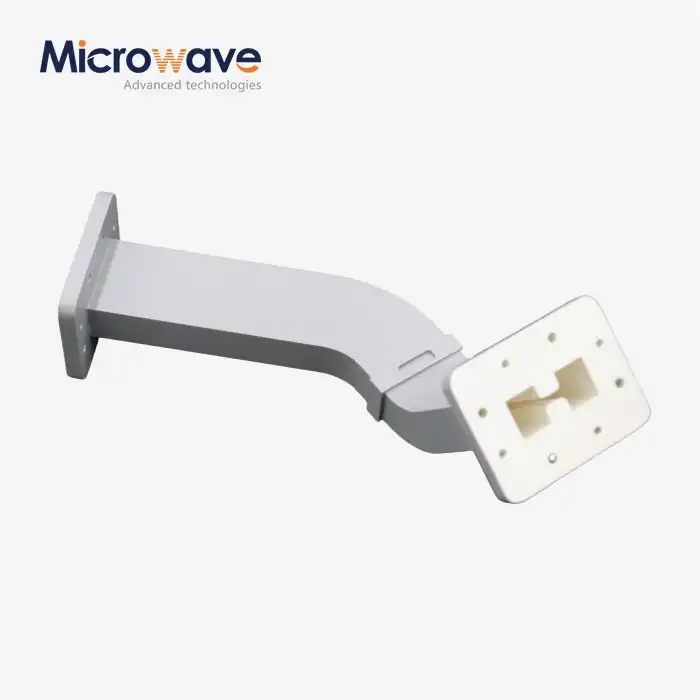 VIEW MOREDouble Ridge Waveguide Bend
VIEW MOREDouble Ridge Waveguide Bend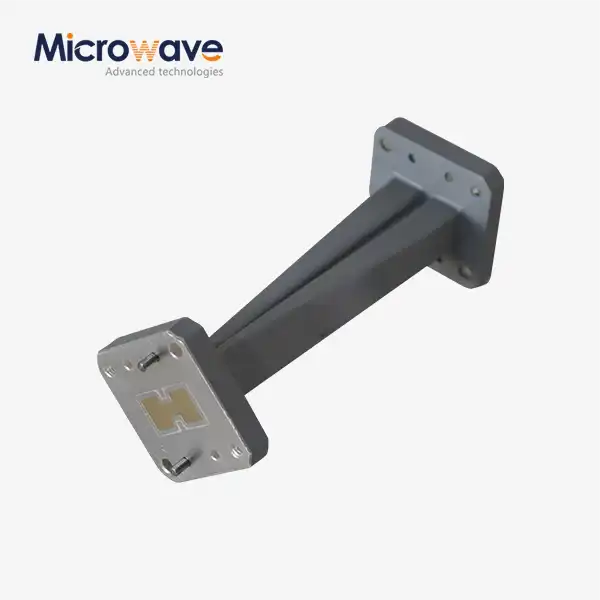 VIEW MOREDouble Ridge Twist Waveguide
VIEW MOREDouble Ridge Twist Waveguide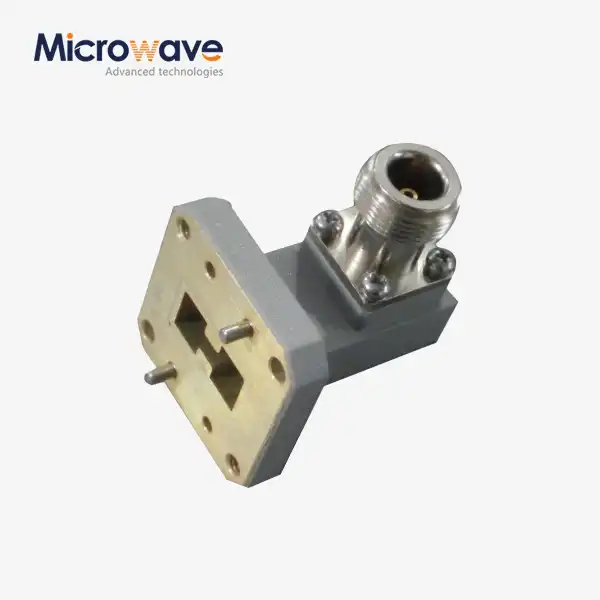 VIEW MOREDouble Ridged WG To Coaxial Adapter
VIEW MOREDouble Ridged WG To Coaxial Adapter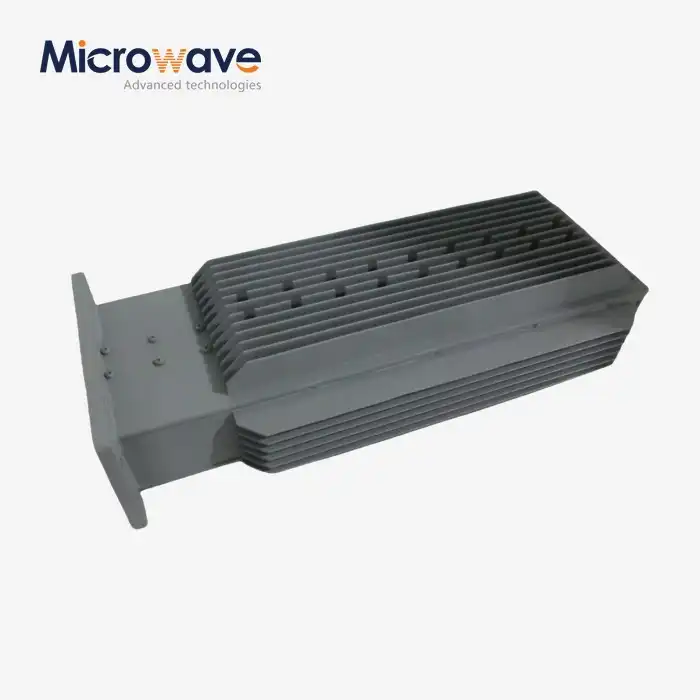 VIEW MOREDouble Ridge Waveguide Load
VIEW MOREDouble Ridge Waveguide Load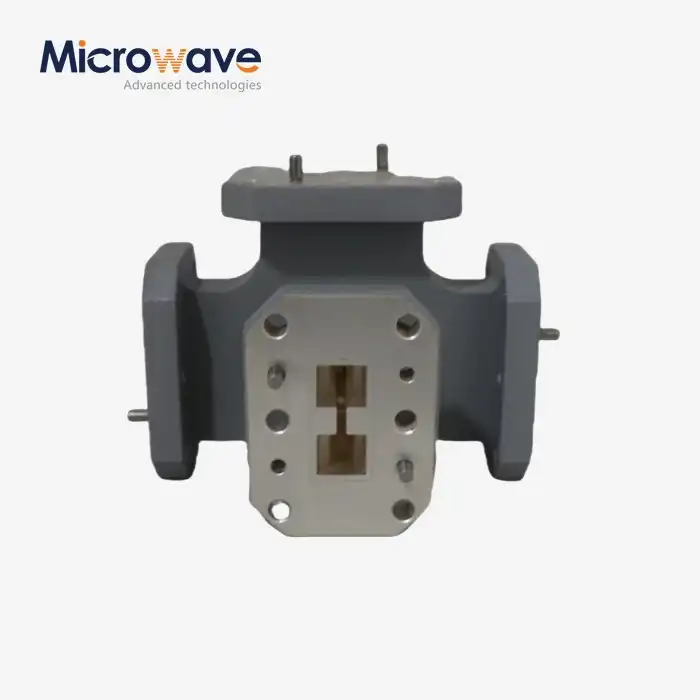 VIEW MOREDouble-Ridged Waveguide Magic Tee
VIEW MOREDouble-Ridged Waveguide Magic Tee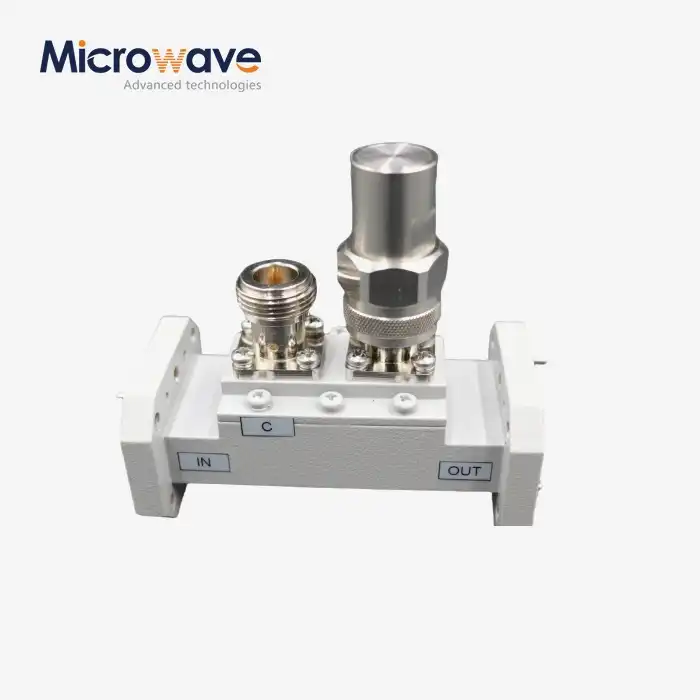 VIEW MOREDouble-Ridged Waveguide Loop Coupler
VIEW MOREDouble-Ridged Waveguide Loop Coupler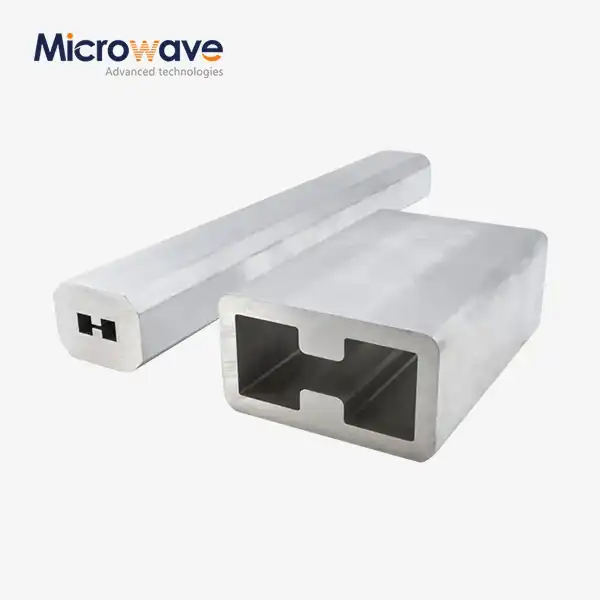 VIEW MOREDouble Ridge Waveguide Tube
VIEW MOREDouble Ridge Waveguide Tube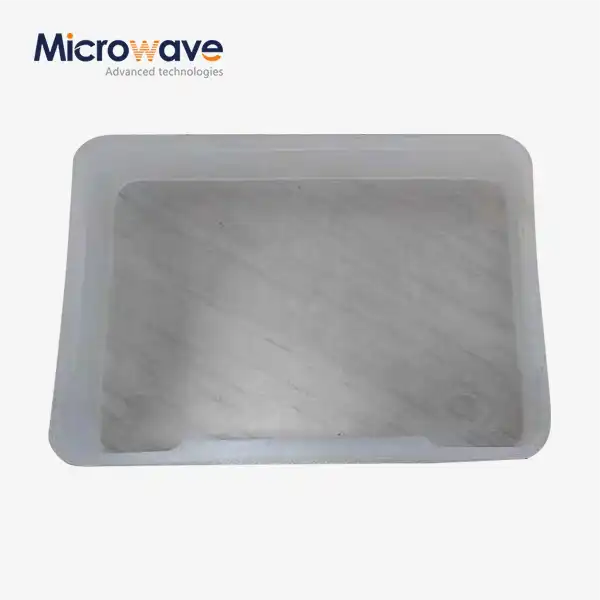 VIEW MOREPlastic Flange Caps
VIEW MOREPlastic Flange Caps




